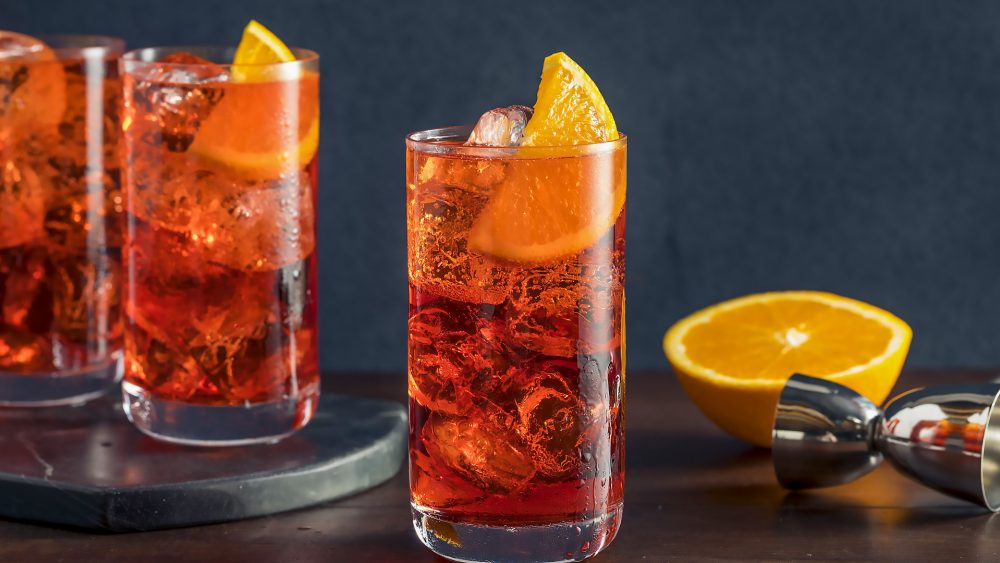It was James Bond’s drink long before the martini and predated the now more common Negroni, which swapped out the seltzer for a stiff shot of gin (and, according to myth, should be strong enough to knock a cowboy off his saddle). I don’t need that sort of horsepower on a weeknight; getting dinner prepped is challenging enough.
The Americano is far greater than the sum of its parts, thanks to the rich complexity of the Campari and sweet vermouth. Each is boldly flavored with botanicals, spice and powerful bittersweetness, which all magically align despite their seeming incompatibility. Doubling down on all that bitterness shouldn’t be palatable, but it just works. And unlike a less-dimensional highball, like a whiskey highball or gin and tonic, the Americano’s flavors remain compelling start to finish—even when all the ice has melted and you’re ready for another.
The Americano offers a lesson in vermouth
Changing the variety of sweet vermouth can dramatically change the drink. Flavor profiles vary from brand to brand and country to country. While some may say that Italian vermouth is essential for an Italian cocktail, I’m not one of them. Choose what you like. Martini and Rossi is the most common and least expensive sweet vermouth, but it’s also the blandest—all one-note sticky sweetness that does little but mellow the Campari’s bitterness. I much prefer the almost as common Dolin Rouge vermouth, from France, which is light, with stone fruit flavors and an easy-going profile. My favorite brand is Italian Punt e Mes, which is heavy duty stuff loaded with strong spice and a heady bitterness. I find its intensity best in cooler months. Spain has elevated sweet vermouth to an art form, and they can be found in a dizzying array of flavors, often less bitter than Italian or French vermouth (perfect if bitter isn’t your thing). And then there are those vermouths produced far from the continent, like a delicious Australian ponzu-spiked vermouth I just found that’s fabulous.
Swap seltzer for bubbly to make it special
Point being, explore your liquor store as you never know what you might find. Sweet vermouths hold well because they have a higher ABV than straight wine, so keep a few around to mix up your rotation. Best practice is to refrigerate after opening, though I rarely do because there’s never enough room in the fridge for my whole collection. Play fast and loose with the Americano and make it your own—as strong as you’d like and in whatever ratio of Campari, vermouth and seltzer you prefer. Play with vermouths and find what works for you. For Valentine’s day, you could even gussy it up by swapping prosecco for the seltzer—what’s called a negroni sbagliato. Still easier going than a full-strength negroni, but you’d never call it weak.
Join the conversation on Facebook, Instagram, TikTok and Pinterest.
And if you're looking for more Milk Street, check out our livestream cooking classes with our favorite chefs, home cooks and friends for global recipes, cooking methods and more.




